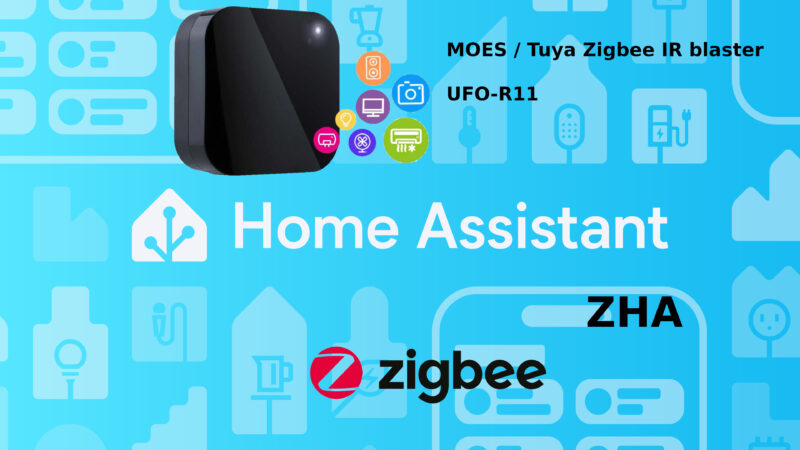Adding a Zigbee Infrared Blaster to Home Assistant using nothing but ZHA

In this tutorial, I’ll guide you through adding your Moes/Tuya Zigbee IR blaster to Home Assistant using only the built-in ZHA component — no need for Zigbee2MQTT or extra add-ons. While the process can be a bit tricky, it’s definitely worth it. This is the first detailed video (as far as I know) that covers everything from initial setup to creating an automation that pre-configures an amplifier before you even walk through the door!
Why this device, and why now?
Why now? It’s simple — I’m not chasing trends or the latest gadgets. My journey with Home Assistant has been about continuously enhancing my smart home setup. Recently, I faced a challenge: how to be more eco-friendly and cut down on unnecessary energy consumption. That’s when I added a Zigbee smart power outlet. Now, every time I leave home and my phone exits a set range, the outlet automatically switches off, ensuring that my PC, TV, and amplifier don’t waste even a single watt of power.
But there was a catch — my amplifier kept forgetting my settings, always reverting to default. Adjusting the volume, bass, and treble every time became a hassle. That’s what led me to explore the world of IR blasters. Prioritizing privacy, I refused to use anything WiFi-based or reliant on mobile apps, which often route through the cloud. I know it might sound paranoid, considering the data at stake is just infrared signals and their timing. But trust me, where there’s data — even seemingly trivial — there’s potential for some very surprising things. You’d be amazed at what can be uncovered.
So, I chose a Zigbee-based IR blaster, and the best, most affordable option was from Moes/Tuya. Why is it great? It’s battery-operated, so you can place it anywhere — on your coffee table, under your TV, or wherever suits you. Most other devices are USB-powered, which would completely defeat the purpose of my ‘electricity-cutting’ setup — since I turn off everything when I leave home!”
What is so special in this scenario?
Like in my previous tutorial, the unique aspect of this setup is that, unlike most YouTube guides, I’m avoiding the common Zigbee2MQTT integration method. I have nothing against Zigbee2MQTT; I just prefer to keep my setup as simple as possible, relying solely on ZHA. Plus, all my experience and knowledge are rooted in ZHA, so it just made sense to stick with what I know best.
Please find the tutorial video below. My video editing skills suck, i know, but i hope the content matches your expectations 😉
References
The information and scripts are gathered from these websites:
Basic info about the quirks and where to download them: https://smarthomescene.com/reviews/tu…
The actual quirk: https://raw.githubusercontent.com/fer…
The GitHub issue page I skimmed through to get the whole thing to work: https://github.com/zigpy/zha-device-h…
